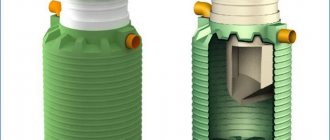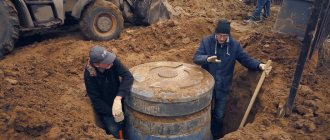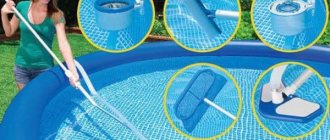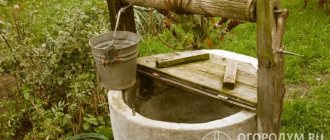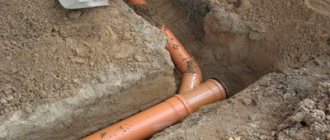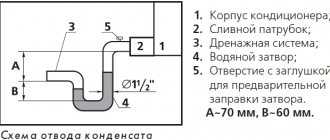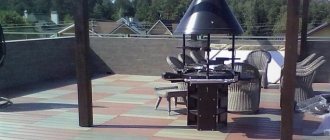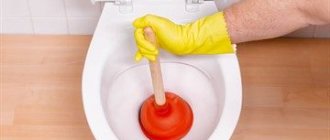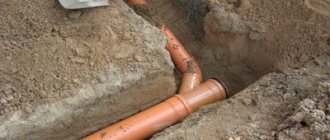What are bacteria for septic tanks
Bacteria for toilets and cesspools are special biologically based cleaning preparations. They are needed in order to do high-quality cleaning. Nowadays such remedies are becoming more and more popular because they are very effective. The idea is to add microorganisms to household waste that process everything unwanted.
You can clean the drain water tank using biological agents Source krrot.net
Cleaning with the use of such bacteria occurs very quickly, and the unpleasant odor disappears in just 4-5 hours. In addition, they have a lot of other advantages:
- Bacteria are absolutely harmless to the environment
- Do not destroy the walls of concrete and plastic septic tanks, unlike chemicals
- Can be used in any natural conditions
- They have a wide range of applications: suitable for toilets, cesspools, industrial treatment plants, sewers
However, there are certain restrictions. Microorganisms can only be used in the temperature range from +5 to +35°C.
Application benefits
An innovative product for septic tanks is usually a concentrate containing strains of natural microbacteria. They need organic matter to live.
The advantages of using such bacteria are as follows:
- Eliminates unpleasant odor from the sewer system;
- The volume of sewage is reduced;
- Drains are disinfected;
- The sediment at the bottom liquefies;
- With systematic use, the frequency of pumping waste from a septic tank or pit is significantly reduced;
- The products do not harm the pipeline and septic tank system.
In addition, the products used are absolutely safe for both the human body and nature.
When choosing a special tool for sewage, you need to take into account some points
Before using bacteria, read the instructions on the package
In such a situation, it will be necessary to clean the septic tank chamber less often. It is good to choose special tablets for the toilet in the country. They actively process feces and paper into environmentally friendly liquid and sludge (minerals) that can become the basis for compost. One tablet is suitable for processing 1 m3 of waste.
Which bacteria are best for septic tanks?
Not all bacteria for septic tanks and cesspools are universal, so for each type of structure you need to select your own product. Below we will look at reputable and trusted manufacturers and help you figure out which one is better to choose.
Doctor Robic
One of the most popular biological cleaning agents. Accelerates the decomposition of household waste and sludge. Can be used in plastic or concrete septic tanks, as well as in earthen wells.
"Doctor Robik" operates in three main areas:
- Accelerates waste decomposition
- Destroys starch, proteins and fats
- Decomposes feces
The tank contains active spores of bacteria that feed on solids. Such microorganisms are resistant to harsh conditions and begin to act after entering a favorable humid environment. The composition includes anaerobic, that is, bacteria that do not require oxygen.
This is what the packaging of Doctor Robik bacteria looks like Source dismar.ru
In a favorable environment, organisms begin to multiply quickly. New colonies appear, which absorb all the nutrients from the wastewater to grow. After 4 days the container will be completely cleaned. But if cleaning has not been carried out for a long time and the septic tank is very dirty, then on the sixth day it is recommended to introduce a new batch of bacteria.
Due to active fermentation, gas plugs may occur on the first day, but they quickly resolve and within a day the entire system will function normally.
It is necessary to pay attention to the fact that “Doctor Robik” is a whole family of biological agents for various works. Some are better suited for cleaning concrete tanks, others for plastic ones, and others are designed to dissolve paper. Therefore, when buying a drug, you need to know what to focus on.
Bacteria decompose household waste by feeding on it Source hi-news.ru
However, during frosts, such cesspool bacteria lose their effectiveness. There are also options that work at subzero temperatures, but they are quite expensive.
Septic-Biogranules
Anaerobic bacteria produced by Sannitree (South Africa). The composition contains enzymes that create the initial nutrient medium for microorganisms.
The product consists of granules packaged in sachets, which are mixed in water before use at the rate of 50 g of the drug per 5 liters of water. After entering the septic tank, the reclamation process accelerates. All solid waste is converted into liquid, which is pumped out and can be used as fertilizer for the garden.
The product for cesspools “Septic-Biogranules” prevents the formation of sludge in siphons and settling tanks, and can also be used to clean drainage fields.
Sewer drainage fields quickly become clogged with silt and require cleaning Source septiki39.ru
See also: Contacts of construction companies that offer services for the calculation and installation of septic tanks and autonomous sewers.
“Septic-Biogranules” is safe for waste systems made of any materials. But the truth is that the drug should not be used together with chlorine-containing compounds and phenols.
Bioactivator live bacteria Biosept
French brand. Live bacteria for septic tanks come in powder or granules. The effect of the drug begins within two hours after activation. The product should be used within two months, adding a new portion every two weeks.
Live bacteria Biosept - a French product for cleaning septic tanks and cesspools Source fishing-caravan.ru
The bioactivator is used not only to clean sewers from sludge, paper and feces, but also to eliminate pathogens. The product copes well with unpleasant odors and significantly reduces the volume of septic tank contents.
However, there are some nuances. Biosept cannot be dissolved or washed off with hot water. Otherwise it will lose its effectiveness. Also, bacteria are killed by chlorine and antibiotics and do not decompose dry waste.
ROETECH 106M
Another good brand that produces chemicals for septic tanks and cesspools. There are two packaging options: 25 g powder sachets and 950 ml suspension. All products are manufactured in Russia using US technologies. In addition to the fact that the product works well against household waste, it also neutralizes hydrogen sulfide.
The composition includes six species of colonial microorganisms that feed on solid matter. ROETECH 106M is used by dissolving in water and flushing down the toilet. Unopened product can be stored for no more than two years.
The drug cleans not only septic tanks and wells, but also all pipes and underground communications. Therefore, it is often used in filtration and treatment facilities. In addition, ROETECH 106M destroys soil-harmful salts contained in waste water.
Using living bacteria ROETECH 106M you can clean the entire underground communications system Source dcgate.pp.ua
It is necessary to create favorable conditions for biobacteria
Your system will work smoothly if you follow simple rules:
- Correctly calculate the required volume (depending on the number of residents and devices in the house, as well as the area of the site and the water being drained). If the storage tank is too small, it will need to be cleaned of solid sediment too often.
- The system must be used regularly. Without wastewater to feed them, the bacteria will die in 3-4 days.
- Resistant bacteria that are not afraid of chemicals at all still do not exist. Even special strains die or are inhibited by chlorine, formaldehyde, aggressive acids and alkalis, antibiotics, and petroleum products. Therefore, you should be careful about the composition of household wastewater and carefully choose detergents. It is better to choose even washing machine and dishwasher powder taking this parameter into account. The recommended water acidity level (pH) is from 4 to 10.
- The optimal temperature inside the drive is from 10 to 35 degrees. This can play a role in winter, so take care of thermal insulation and deep laying of the tank, as well as additional cooling of excessively hot domestic wastewater.
- Leaching can be a big problem. Bacteria will linger in the septic tank if crushed stone, gravel, blast furnace slag, and anthracite are added to the bottom and walls. Polymer materials have proven themselves well in biological treatment tanks. Brushes, meshes made from them, as well as fleecy materials placed freely in the volume, increase cleaning efficiency by up to 90% (versus 25% for crushed stone).
- Depending on the operating mode, on average once every 1–3 years it is necessary to remove solid sediment from the bottom. Anaerobic substances require a liquid to sediment ratio in the settling tank of at least 2 to 1.
- Approximately once every 2 months, a portion of the bioactivator is added to the sewer to maintain the colonies.
- It is necessary to clean the drainage systems on the site with water under pressure, and wash the biological filter approximately once every six months to remove sediment accumulated on the walls.
The main types of living bacteria for septic tanks
There are two main categories of bacteria: aerobic and anaerobic. The former require access to oxygen, while the latter can live in an oxygen-free environment.
Anaerobic bacteria
The most unpretentious option. They do not require oxygen for their normal functioning. They decompose solid waste, sinking it to the bottom, and the water becomes clean and bright.
The disadvantage of anaerobic bacteria is that you constantly need to remove solid masses using special equipment. Moreover, the sludge must be disposed of and under no circumstances be used as fertilizer.
When anaerobic bacteria are used in a septic tank, sludge and mineral deposits form. Source pinterest.com
Aerobic microorganisms
Aerobic bacteria do not live without oxygen. Therefore, they can only be used in septic tanks that communicate with the atmosphere. Moreover, the air must be constantly pumped using a compressor. Aerobic microorganisms can be used as a means for country toilets to dissolve fecal matter and as a means for cleaning sewer pipes and underground tanks.
Aerobic bacteria can only be used in septic tanks with compressor units Source aquakomfort-spb.ru
The advantage of this choice is a relatively small amount of sediment and the removal of almost all harmful impurities. Therefore, you can clean the toilet or septic tank much less often. In addition, aerobic bacteria do not produce methane, which cannot be said about anaerobic bacteria.
Which bacteria are suitable for what?
When choosing septic tanks for cesspools and toilets, the first thing to consider is packaging. In the case of cesspools and country toilets, tablets are more suitable. To process 1 m3 of feces into safe compost, one tablet is enough. Powders or suspensions are most suitable for underground communications, because it is in this form that it is more convenient to deliver the active substance there.
It is better to pour a solution of powder or suspension into septic tanks Source yandex.uz
Anaerobic microorganisms are well suited for country toilets. After all, the resulting mass can be immediately pumped to the site and used as fertilizer. Aerobic bacteria are most often used in septic tanks, because clearing solid sediment from underground reservoirs is problematic.
The most universal drugs are marked “109” on the packaging. Such agents are capable of decomposing a number of compounds:
- Proteins;
- Fats;
- Cellulose;
- Urea;
- Feces.
The rest of the living bacteria are intended for specific purposes. All indications for use must be read on the packaging.
Possible difficulties
There are a number of substances that can inhibit or even completely destroy a colony of microorganisms.
Therefore, it is necessary to avoid getting the following reagents into the pit:
- household chemicals, especially chlorine-containing products;
- manganese;
- any antibacterial drugs can completely destroy the colony;
- medicines;
- fragments of filtration installations.
If you use a dishwasher or washing machine, you need to buy products with chemical-resistant bacteria. If, nevertheless, any aggressive substance gets into the drain, then it is necessary to introduce a new portion of microorganisms.
How to use bacteria for septic tanks
Using bacteria for cesspools and toilets is easy. The whole procedure consists of delivering the product to a septic tank, toilet or cesspool. This can be done in different ways:
- Pour the solution through the toilet and flush it several times
- Pour the powder through the septic tank hatch
- Mix the product in warm water and pour into the cesspool
Moreover, at a certain interval of time it is necessary to replenish the number of bacteria. Most often, manufacturers recommend doing this once every 10-14 days.
For cesspools, powder diluted in water is usually used Source goindie.com
All bacteria for septic tanks are harmless to humans and animals, but it is better to work with them with gloves.
Experts recommend
Any cleaning of sewage facilities using biological agents for country toilets and cesspools is best done in the warm season. Optimal conditions for bacterial growth are high humidity and temperature +20°C.
Cesspools should be used immediately before using bacteria or should be filled with water. The fact is that microorganisms will not be able to process dried waste.
Before using live bacteria, the dried cesspool is filled with water Source los.bio
When choosing products for cleaning septic tanks, you should pay attention to the composition. It is desirable that it include nutritional emulsions and that the concentration of bacteria be as high as possible.
Important! Cleaning of sewage lines must be carried out in a timely manner. Otherwise, there is a risk of excessive pollution and clogging, which can lead to large expenses for septic tanks for cesspools.
What should you pay close attention to when choosing biological products?
If there is a provocative inscription on the label that this biological product is the most “exceptional”, “unique”, “latest development”, then know that this is just a marketing ploy and feel free to put it aside. It is known for certain that there are no new inventions in this area, so there is no point in paying extra money for the same bacteria in beautiful packaging. However, this does not mean that you can buy whatever you want.
You definitely need to pay attention to the manufacturer’s brand and give preference to the more well-known one. This will guarantee that during the production of microorganisms technical regulations were not violated, and these bacteria will live and reproduce
Such a biological product will effectively work on the problem of wastewater treatment:
- Eliminate odors.
- Biotreated water will be completely safe for plant growth.
- Ground and underground waters will not be exposed to polluting factors.
Attention! Before choosing a specific type of bacteria for bioseptics, you need to collect at least superficial information about similar products: the variety of commercially available species, names of biological products, business reputation of manufacturers, etc. Below is a short overview of the market offer
How much do bacteria cost for septic tanks?
Most manufacturers package medications in standard 25 g sachets. This is a single dose for a 750 liter container. There can be up to 50 such bags in a pack. This is necessary for regular use, because during any cleaning you have to pour the product into the septic tank several times.
Two sachets of Biosept in Moscow will cost 141 rubles. Bioactivator ROETECH 106M will cost 46 rubles per sachet. There are also cheaper options. 1.5 kg of live bacteria for septic tanks and cesspools “Tratan” can be purchased for 190 rubles.
There are also non-standard packaging. The new Russian manufacturer Biolatic offers bags of 80 g. It is stated that this weight is enough to clean a septic tank with a volume of 2 m3. Biolatic - Septic costs an average of 150 rubles for such a package.
A product for cleaning septic tanks from a young manufacturer Biolatic Source sirodelie.by
Doctor Robik septic tank and cesspool cleaner can often be found in suspension format. A 750 ml bottle costs about 579 rubles. And the average cost of a 40 g bag of granules for septic tanks is approximately 180 rubles.
Briefly about the main thing
Live bacteria for septic tanks are biological means for cleaning wastewater communications. They are harmless to humans and nature, unlike chemical compounds.
Bacteria for septic tanks are divided into two types: aerobic, which require oxygen, and anaerobic, which can live in an oxygen-free environment.
Live bacteria for septic tanks are produced in the form of granules, suspensions, tablets and powder.
In order to clean a septic tank or cesspool, a solution of warm water with bacteria is poured into it.
It is not recommended to use live bacteria in septic tanks in subzero temperatures.
Such drugs are affordable, and stores have a large selection of formulations for specific purposes and manufacturers.
A little more attention!
Do you think bacteria for septic tanks and cesspools is the best remedy, or are other options more relevant due to its seasonality? Write in the comments which drain cleaning products you prefer.
Ratings 0
Read later
